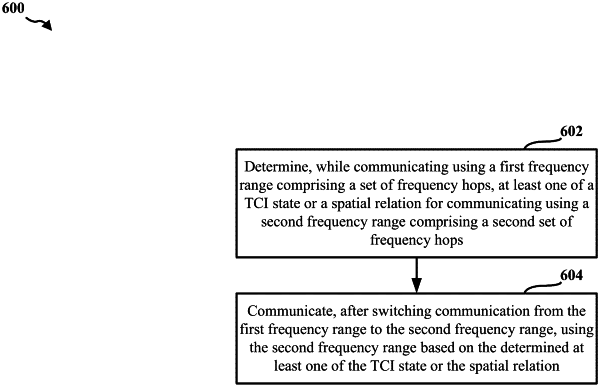| CPC H04W 72/0453 (2013.01) [H04L 5/0048 (2013.01); H04W 72/51 (2023.01)] | 30 Claims |

|
1. An apparatus for wireless communication at a user equipment (UE), comprising:
a processing system that includes one or more processors and one or more memories coupled with the one or more processors, the processing system configured to cause the apparatus to:
identify, while communicating using a first frequency range comprising a first set of frequency hops, at least one of a transmission configuration indication (TCI) state or a spatial relation for communicating using a second frequency range comprising a second set of frequency hops; and
communicate, after switching communication from the first frequency range to the second frequency range, using the second frequency range in accordance with the at least one of the TCI state or the spatial relation.
|